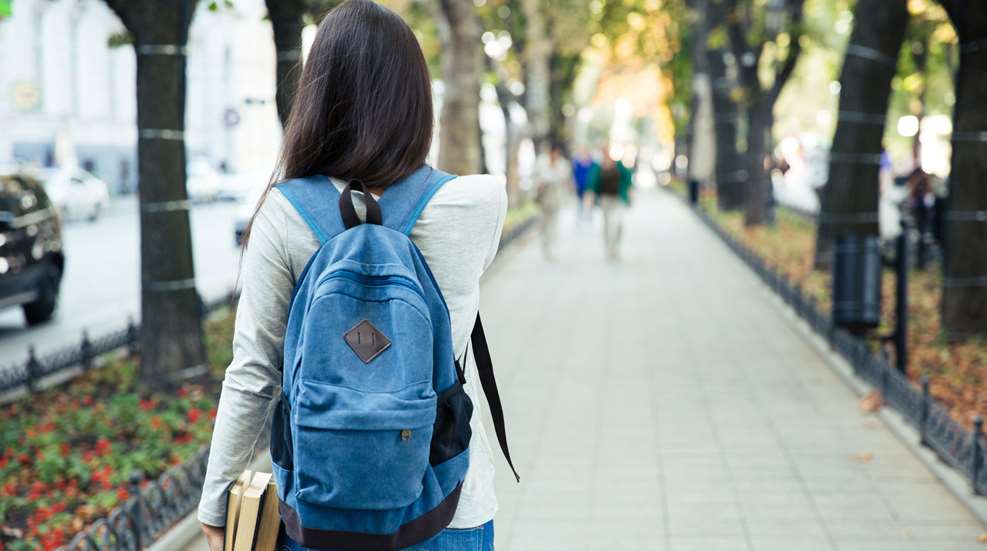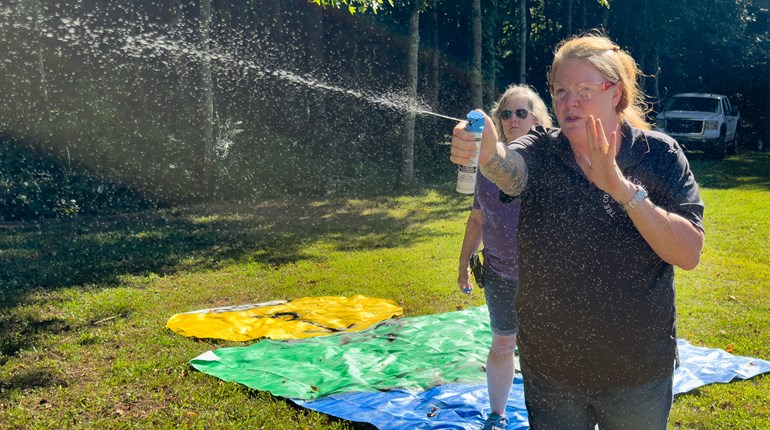
While we’re big fans of concealed-carry firearms (and the associated training) for self-defense, there are situations where that won’t be an option. College kids are a primary example: Most campuses are gun-free zones. Maybe your workplace or your city or state is similarly restrictive when it comes to carrying—but whatever the reason, if a firearm isn’t an option for defending yourself, what else can you turn to?
The Best Defense Is a Good Offense
Apologies for butchering that sports analogy, but it’s true that the best way to keep yourself safe—whether you have a firearm or not—is to avoid trouble in the first place. We discussed this in depth in another article, but to sum up, the three ways to do this are:
Absence: Avoid violence by not being there when it happens. In other words, avoid places where the risk is high. For college kids especially, this includes places where people are altering their minds with drugs or alcohol.
Escape: Get the heck out when you see trouble brewing rather than sticking around to “see how things go.”
De-escalation: Trying to talk your way out of a bad situation or other diffuse trouble before it turns violent is tricky business, but it’s almost always worth a try if the situation allows.
Situational awareness, or what we call Code Yellow and Code Orange on Cooper’s Color Code, can help you spot trouble when there’s still time to do something about it. Whether you’re armed or not, don’t wander through life in auto-pilot. Pay attention to what’s going on around you and look for potential trouble spots before they bubble over.
A good offense also involves simple steps like keeping your door locked while you’re asleep, selecting the people you hang out with carefully, and asking a friend or campus security for an escort if you have to cross campus after a late shift at the library and you feel unsafe walking in the dark. And of course, don’t accept drinks from strangers or leave your drink unattended, and stick to groups when you’re out partying or traveling.
Physical Fitness
One of my biggest pet peeves in movies is when a 120-pound woman, clearly physically fit and well-trained in martial arts, gets in a fistfight with and defeats multiple 200-pound men. Yeah, I guess it’s possible, but in real life, you are not likely to physically fight off a male attacker no matter what belt color you’ve achieved or how many years you’ve trained in krav maga.
This doesn’t mean physical training is worthless, by any means. What it buys you is a slightly better chance in a fight, a little knowledge about how to escape, and an increased ability to run away effectively. Being in good physical condition will only help you defend yourself, with no downside as long as you understand your own limitations.
Alternative Self-Defense Tools
If you can’t carry a firearm, you have several other options. Some of these are regulated or restricted in some states, so check your local laws (and any campus rules if those matter to you).
Pepper spray: This is a go-to option for many college students, particularly women. Pepper spray can be very effective when used properly, but it’s a good idea to empty a canister as practice before you carry a can for self-defense. You don’t want to fumble with the mechanism at the worst possible time or lose track of the wind direction and end up spraying yourself as much as the bad guy. Pepper spray canisters lose pressure over time, so keep an eye on the expiration dates and replace as needed.
Knives: A knife for self-defense is better than nothing, certainly, but I strongly encourage you to get some specific training on how to use a knife effectively. Knife fighting is an entire world unto itself, and you can hurt yourself badly while trying to defend yourself if you don’t know what you’re doing.
TASERs and stun guns: These are highly regulated in some states, so check your applicable laws. Stun guns have a very limited range—you have to able to physically touch the attacker with the gun in most cases, whereas a TASER shoots prongs out several feet, giving you a little more range. TASERS offer one or two shots at most before you have to swap out a cartridge, but a stun gun will keep stunning as long as it has battery. Of course, TASERS are considerably more expensive, which might be a determining factor for you.
Whistles and sirens: Noise-emitting devices can sometimes be effective at drawing a crowd, assuming people are within earshot. That is their primary limitation—if you’re in an isolated area with no one around to hear you whistle, it’s of no use. In situations where passersby are within hearing distance, the attention a blaring siren will attract can be helpful—but be aware that many people will ignore a whistle or a siren—just think how many of us ignore a car alarm because they go off so frequently.
Pain multipliers: Batons and mini batons, kubutans, tactical pens and other striking-type weapons can be useful in trained hands, but that’s the rub. You can’t just stick one on your keychain and consider yourself armed—you need training on how to use the tool effectively.
Oh, and forget the old keys-between-your-fingers thing. If you must use a key between your fingers to strike someone, the penetration is incredibly shallow and thus not very damaging, and you’re likely to seriously hurt your own hand in the process.
Mindset: A willingness to do whatever it takes to defend yourself goes a very long way. Decide right now that you will fight tooth and nail using whatever is at your disposal to protect yourself, and give self-defense some thought and planning.
This is important for everyone, but especially those who aren’t able to use a firearm for defense. Select an alternative self-defense tool that works for you and is legal in your area, consider upping your physical fitness level and training, and be mindful of times, places and people that seem to attract trouble so you can avoid them or get out before things go sideways.















































